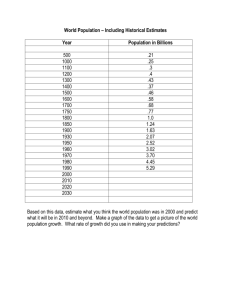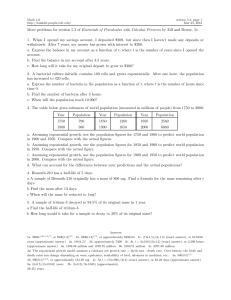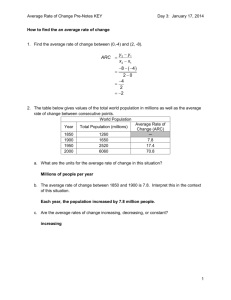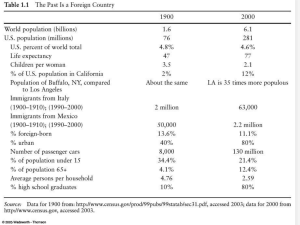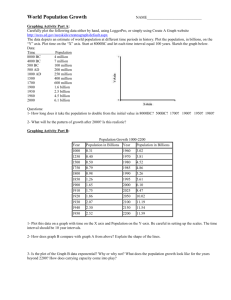23-april-2009-the-demographic-transition-some-features
advertisement
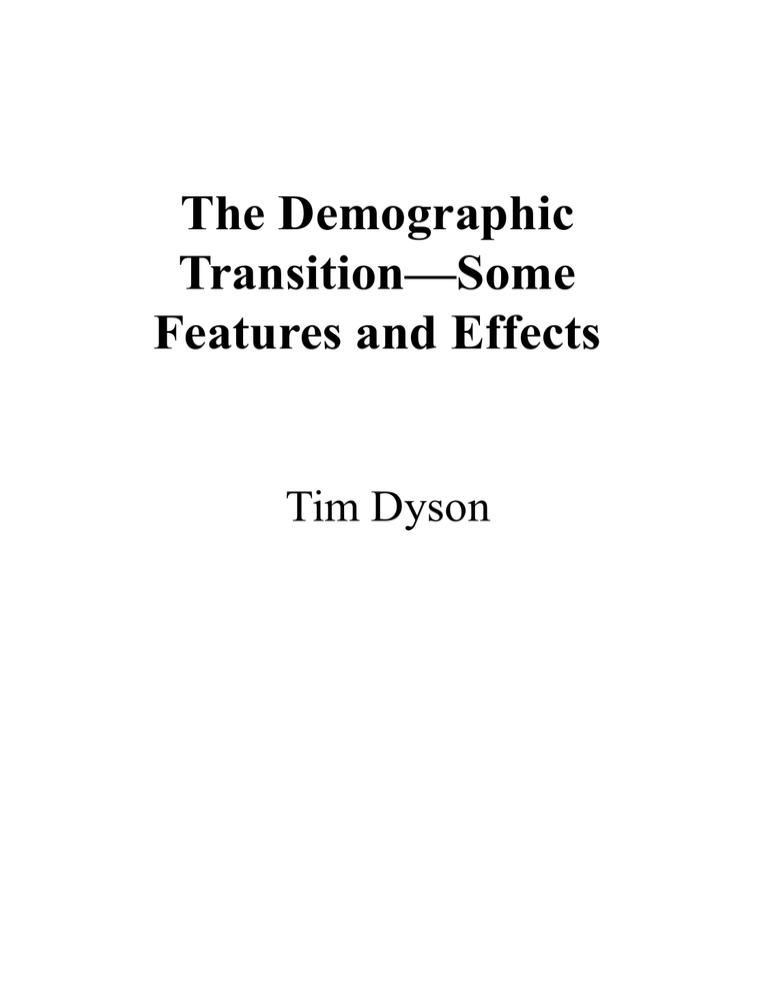
The Demographic Transition—Some Features and Effects Tim Dyson Netherlands 50 45 40 35 30 25 20 15 10 5 0 1840 1860 1880 1900 1920 1940 1960 1980 2000 Spain England and Wales 50 50 45 45 40 40 35 35 30 30 25 25 20 20 15 15 10 10 5 5 0 1700 0 1750 1800 1850 1900 1950 2000 1850 1870 1890 Taiwan 1930 1950 1970 1990 2010 Egypt 50 50 45 45 40 40 35 35 30 30 25 25 20 20 15 15 10 10 5 5 0 0 1900 1910 1920 1940 1960 1980 2000 1910 1930 1950 1970 1990 2010 Between 1750 and 2050 the ‘growth multiple’ of the human population is expected to be roughly nine. In Europe, populations increased by factors of two or three as they went through the transition. In China the factor will be about three or four. In India it may be about five. However, in many poor countries it will be anywhere between five and twenty—indeed, even higher growth multiples are possible. The consequences of low and high fertility can be illustrated by a comparison of Russia and Nigeria over 1950-2050. Russia’s population rose from 103 to 147 million, and even assuming some recovery in fertility it is projected to fall to 116m by 2050. The figures for Nigeria are 37m, 125m and 289m. Barring a meteorite hit, or a nuclear war, the broad picture shown is inevitable Figure 5.2(a) Crude death and birth rates for urban and rural areas of Sweden, 1750-1960 50 40 Per thousand 30 20 10 0 1750 1800 1850 1900 1950 -10 -20 Year CBR-R CDR-R CRNI-R CRNI-U CBR-U CDR-U ‘Rapid population growth is found to have exercised a quantitatively important negative impact on the pace of aggregate economic growth in developing countries … rapid fertility decline is found to make a quantitatively relevant contribution to reducing the incidence and severity of poverty’ (Birdsall and Sinding 2001: 6) The main factor behind rapid urban growth in developing countries is rapid population growth. However, as Preston has observed: ‘Oddly, family planning services are rarely seen as a candidate for slowing urban growth’ (Preston 1979: 210-11) The relationship between urban and total population growth rates, 111 countries, 20002005 8.00 7.00 y = 1.5272x R2 = 0.7172 Urban growth rate 6.00 5.00 4.00 3.00 2.00 1.00 -2.00 0.00 -1.00 -1.000.00 1.00 2.00 3.00 -2.00 Population growth rate of country 4.00 5.00 Other things equal, population growth has an upward influence on CO2 emissions—an effect that is much greater in rich countries than in poor countries (see Dyson 2005). Population matters! In many ways the demographic transition has been a very good thing. But it also represents a period of considerable destabilization—at both the household and the national levels. The provision of safe, effective, and affordable contraception is the main way of minimizing this destabilization. Contraception provides people with choice. And all the evidence is that, given the possibility of making the choice, then eventually women and men always decide to take it.
